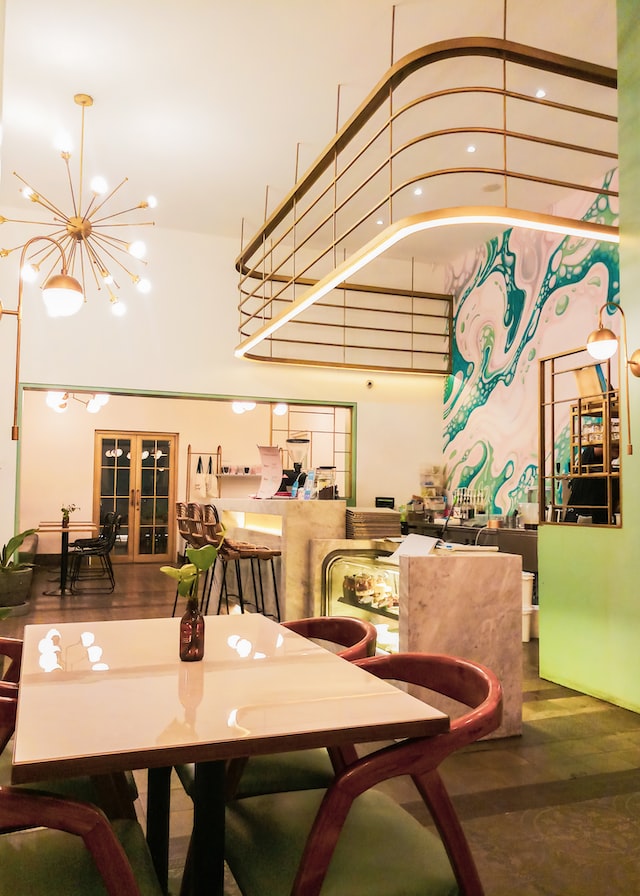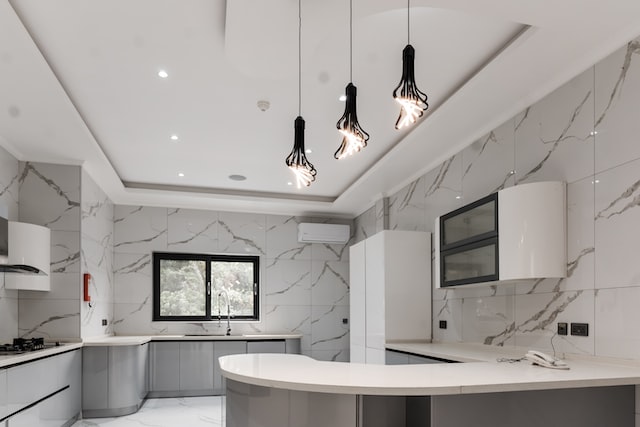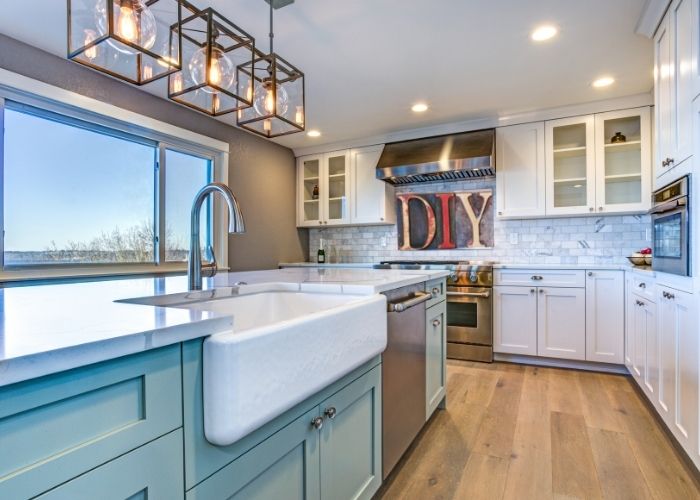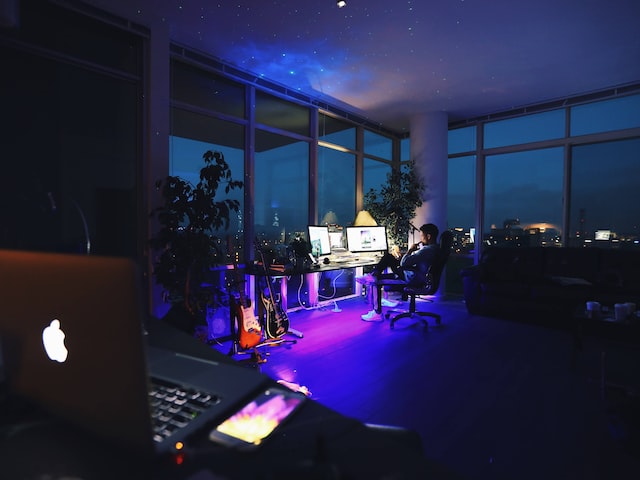Good lighting design is essential when creating a comfortable, inviting atmosphere in your home. From ambient mood lighting to accentuating each room’s best features, thoughtful use of light can transform any interior design and contribute significantly to the overall ambiance of the room.
With clever use of natural and artificial lighting, you can create a warm, welcoming space that reflects your personality and enhances its functional aspects. Read on for lighting tips to create an inviting atmosphere!

The Role of Lighting in Home Design
Lighting plays a crucial role in home design and interior decorating. It can transform the feel of a room and draw attention to specific areas. Consider these lighting options when creating your room design.
Accent Lighting
- Spotlights or recessed fixtures showcase unique features like artwork or architectural elements.
- Wall sconces draw attention toward specific points in the room.
- Pendant lights above dining tables provide illumination without being too bright.
Task Lighting
- Increase brightness around work areas like desks, countertops, and kitchen islands.
- Adjustable indirect light illuminates to meet your needs.
- Desk lamps with clamp-style arms provide easy movement between tasks.
Table Lamps
- Add a layer of light to soften harsh shadows from overhead sources.
- Beautifully decorative accents transform a dull corner into something special.
- Require careful selection based on form and function, with size an important factor.
By carefully choosing lighting options based on needs, you can create an inviting atmosphere and bring warmth and energy into your space.

Types of Lighting for Interior Decorating
Lighting plays an important role in home design and interior decorating, as it helps to set the mood and create an inviting atmosphere. The following are the main types of lighting used in interior decorating:
Ambient Lighting
- Provides general illumination without harsh shadows or bright spots.
- Ideal for living rooms, dining rooms, bedrooms, and hallways where calmness is desired.
- Chandeliers, flush mount lights, ceiling fans with integrated lights, recessed cans with track heads, and wall sconces provide ambient lighting.
Accent Lighting
- Adds drama by creating focal points throughout the room.
- Provides additional task-oriented lighting.
- Recessed downlights, pendant lights, and LED strip lights create highlights.
Task Lighting
- Direct light for specific tasks.
- Desk lamps, floor lamps, and pendant lights provide light to work without eye strain.
Each type of lighting has advantages and disadvantages, and the best choice depends on a room’s desired look and feel. By selecting the correct type of lighting, you can create a warm and inviting atmosphere in your home.
Tips and Tricks to Use Light
Lighting sets the mood of a room. It can create ambiance and make a room feel more inviting. Here are some tips and tricks to effectively use light:
- Use natural lighting whenever possible. Natural light from the sun helps brighten up a room and make it look larger by adding shadows, softness, texture, dimensions, and perspective.
- Use different lighting fixtures. Incorporate lamps or sconces throughout your space for task-specific and ambient mood lighting.
- Vary the intensity of the light in each area. Set different levels of brightness depending on how you use the room. Spaces dedicated to leisure, like living or dining areas, should have brighter lights, while bedrooms need dimmer ones.
- Consider reflected or indirect lighting effects. Reflective surfaces like mirrors allow light to bounce around a room and reduce glare.
Using Color to Enhance Ambiance
Use color as a powerful tool to enhance the look and feel of a room through lighting. There are many ways to add color to your lighting design, from incandescent bulbs to LED lights. Here are just a few options.
Colorful Fixtures
- Brighter colors like yellow, orange, and red add energy to the room.
- Softer colors like blue or green create a calming atmosphere.
Lighting Sources
- Halogen lamps produce sparkling effects.
- Wall washers with diffused light provide a dramatic contrast.
Mood
- Consider the perspective you want to evoke in the space.
- Combine colors to create the perfect environment for any occasion.
By carefully picking the right combination of colors and light sources, you create an inviting environment. Consider your desired mood, how the room is used, and where lights will be placed when making final lighting selections.
Furniture & Lighting – A Great Combination
In addition to lighting, furniture can significantly enhance a room’s atmosphere. Here are some important considerations to keep in mind:
Furniture is another important aspect of creating ambiance through home design and interior decorating. High-end pieces can elevate the style and sophistication of a room, making it feel more inviting and comfortable.
One of the most iconic examples of furniture is the Eames Lounge Chair. Made from high-quality materials and available in various colors and finishes, this chair is the perfect addition to any living room, office, or study.
Other examples of high-quality furniture include designer sofas, armchairs, coffee tables, and other pieces from well-known brands. These pieces are often crafted from premium materials, such as leather, wood, and metal, and feature intricate design details that make them stand out from traditional furniture.
When incorporating furniture into your home design, it’s important to choose pieces that complement the overall style and theme of the room.
Consider the colors, finishes, and materials used in other elements of the space, and choose furniture that enhances the ambiance you’re trying to create.
Combining the right lighting fixtures with furniture creates a warm, inviting, and elegant atmosphere in your home. Take your time to consider your options wisely to achieve the desired effect. Taking into account current flooring trends can also help you achieve a cozy room setting.
In conclusion, lighting is a crucial aspect of home design and interior decorating. It has the power to transform the ambiance of a room and elevate the overall aesthetic. Understanding the different types of lighting and how to use them effectively can help create the desired mood and bring a space to life.
Whether through task lighting, accent lighting, or ambient lighting, the right lighting plan can make all the difference in a home design project. By considering the essentials of lighting in home design, homeowners can achieve a beautiful and functional living space they will love coming home to.

About the Author
Cheryl is our go-to guru for all things sustainable living. She’s on a mission to make your family and our planet thrive! With a heart as big as her passion for sustainability, Cheryl brings you the freshest insights on eco-friendly building products and energy efficiency. 🌱💡
And hey, did you hear about the eco-friendly lightbulb that went to therapy? It finally found its inner “enlightenment”! 😄 Join Cheryl on this green journey, where she’ll tackle your concerns with a smile and a sprinkle of eco-humor!



